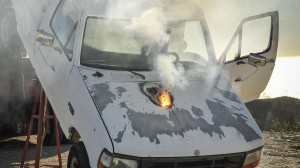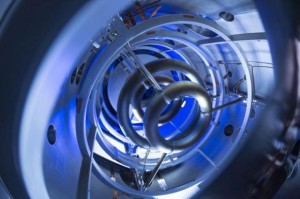
ATHENA burned through the truck engine in a matter of seconds from more than a mile away.
Image: Lockheed Martin
Lockheed Martin has been making headlines recently in light of their development of novel compact fusion reactors. Now, the company is back in the spotlight due to their new high-powered laser.
They’re calling the laser ATHENA (Advanced Test High Energy Asset). In a recent test, the direct energy weapson was able to burn through a truck’s engine from a mile away in less than one minute.
“Fiber-optic lasers are revolutionizing directed energy systems,” said Keoki Jackson, Lockheed Martin chief technology officer. “We are investing in every component of the system – from the optics and beam control to the laser itself – to drive size, weight and power efficiencies. This test represents the next step to providing lightweight and rugged laser weapon systems for military aircraft, helicopters, ships and trucks.”


